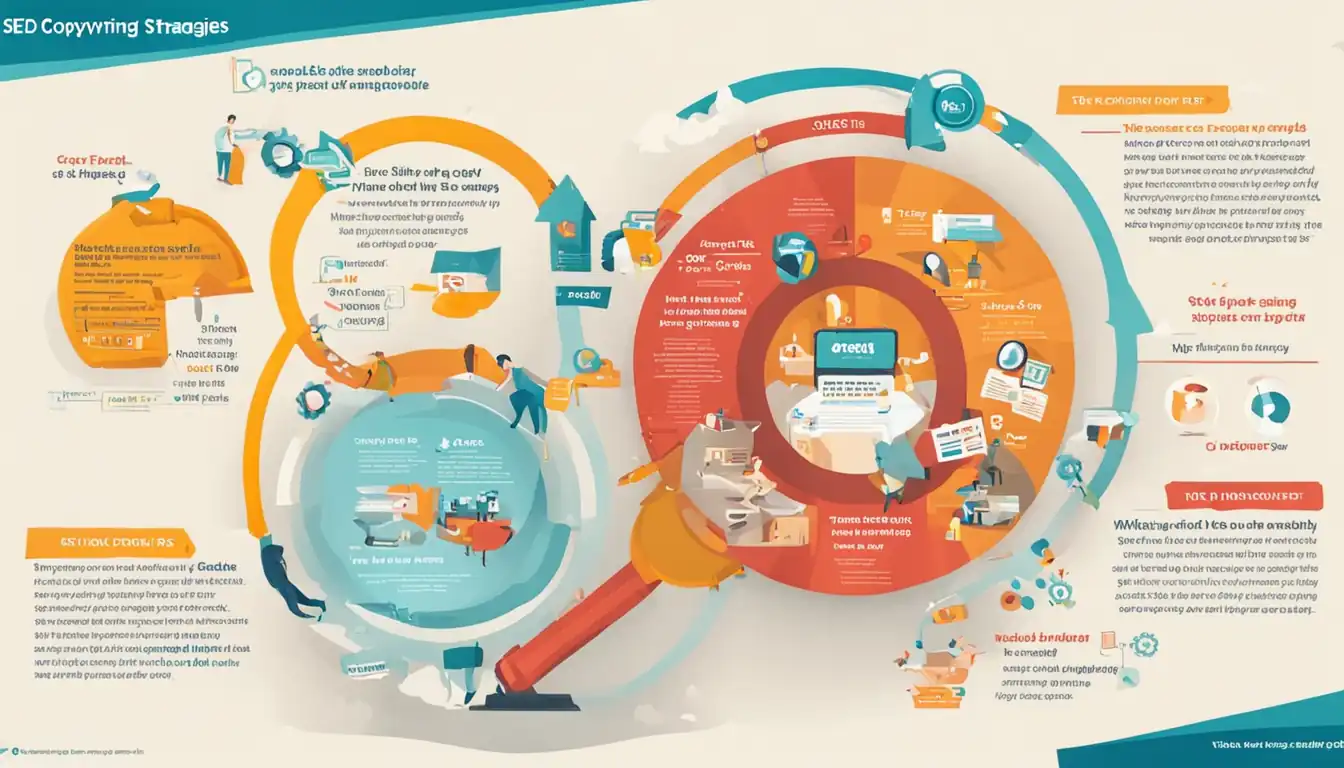Mastering SEO Copywriting Techniques

Welcome, fellow wordsmiths and SEO enthusiasts! Today, we're diving into the world of mastering SEO copywriting techniques. If you've ever felt lost in the sea of search engine algorithms or struggled to craft content that both ranks well and resonates with readers, fear not. This guide is here to equip you with the tools and knowledge needed to navigate the ever-evolving landscape of SEO copywriting.
Understanding SEO Copywriting
What is SEO Copywriting?
SEO copywriting is the art of creating content that is not only engaging and informative for readers but also optimized for search engines. It involves incorporating relevant keywords, meta tags, and other SEO elements into the text to improve a website's ranking on search engine results pages (SERPs).
The Role of SEO in Modern Marketing
In today's digital age, having a strong online presence is crucial for businesses to succeed. With millions of websites competing for attention, it is essential to utilize SEO techniques to ensure that your content stands out and reaches your target audience. SEO copywriting plays a vital role in driving organic traffic to websites and increasing visibility in search engine results.
Crafting Compelling Headlines
Importance of Eye-Catching Titles
Crafting compelling headlines is crucial in SEO copywriting as it is the first thing that catches the reader's attention. A well-crafted headline can entice readers to click on your content, improve your click-through rate, and ultimately boost your search engine rankings.
Practical Tips for Effective Headlines
- Use numbers or statistics: Incorporating numbers or statistics in your headlines can make them more compelling and increase their credibility.
- Include keywords: Make sure to include relevant keywords in your headlines to improve SEO and help search engines understand the topic of your content.
- Keep it concise: Aim for a headline that is clear, concise, and to the point. Avoid using unnecessary words that may dilute the impact of your headline.
- Create a sense of urgency: Use words like "now," "today," or "limited time" to create a sense of urgency and encourage readers to take action.
- Ask a question: Asking a question in your headline can pique the reader's curiosity and make them more likely to click on your content.
- A/B test your headlines: Experiment with different headline variations to see which ones perform best with your audience and adjust accordingly.
Remember, crafting effective headlines takes practice and experimentation. By following these practical tips, you can create compelling headlines that drive traffic to your website and improve your SEO efforts.
Keyword Research and Integration

Keyword research is the foundation of successful SEO copywriting. By identifying the right keywords, you can optimize your content to rank higher in search engine results pages.
Tools and Techniques for Finding the Right Keywords
Utilize tools such as Google Keyword Planner, SEMrush, and Ahrefs to conduct keyword research. These tools provide valuable insights into search volume, competition, and related keywords. Additionally, consider analyzing competitor websites to identify keywords they are ranking for.
Balancing Keyword Density and Readability
While it's important to integrate keywords strategically throughout your content, avoid keyword stuffing. Aim for a keyword density of 1-2% to maintain readability and avoid penalties from search engines. Focus on creating high-quality, engaging content that naturally incorporates your target keywords.
Writing Engaging Content
How to Hook Your Reader in the First Paragraph
Crafting a captivating introduction is crucial in SEO copywriting. Start with a compelling hook that grabs the reader's attention and entices them to continue reading. Pose a thought-provoking question, share a surprising statistic, or tell a compelling story to draw the reader in from the start.
Keeping the Momentum with Transitional Phrases
Transitional phrases play a key role in maintaining the flow of your content. Use words like "furthermore," "in addition," and "however" to smoothly transition between ideas and keep your readers engaged. These phrases help guide your audience through your content seamlessly, making it easier for them to follow along and stay interested.
Optimizing Content Structure for SEO
Using Subheadings to Improve Scanability
Incorporating subheadings into your content is crucial for enhancing scanability and improving the overall user experience. By breaking up your text into smaller sections with descriptive subheadings, you make it easier for both readers and search engines to understand the main topics covered in your content. This not only helps users navigate through your content more efficiently but also signals to search engines the relevance of your keywords.
Importance of Bullet Points and Numbered Lists
Bullet points and numbered lists are powerful tools in SEO copywriting as they help organize information in a concise and digestible format. By using bullet points, you can highlight key points, list out important details, and make your content more visually appealing. Not only do these formatting techniques improve readability for users, but they also signal to search engines the importance of the listed items within your content. Incorporating bullet points and numbered lists can significantly enhance the overall structure of your content and boost its SEO performance.
Enhancing User Experience Through Language

Incorporating Idioms and Colloquialisms Naturally
Incorporating idioms and colloquialisms into your SEO copywriting can add a touch of personality and make your content more relatable to readers. However, it is crucial to do so naturally without forcing them into the text. When used appropriately, idioms and colloquialisms can help engage your audience and create a more enjoyable reading experience.
Avoiding Jargon to Maintain Clarity
While it's important to showcase your expertise in the content you create, using excessive jargon can alienate readers who may not be familiar with industry-specific terms. To maintain clarity and ensure that your content is accessible to a wider audience, avoid unnecessary jargon and explain complex concepts in simple terms. This will not only improve the user experience but also make your content more valuable and informative.
Leveraging Meta Descriptions and Tags

Crafting Descriptive Meta Tags
Crafting descriptive meta tags is crucial for SEO copywriting success. These tags provide a brief summary of the webpage's content and help search engines understand what the page is about. When crafting meta tags, be sure to include relevant keywords that accurately reflect the content on the page. This will not only improve click-through rates but also boost your search engine rankings.
The Significance of Meta Descriptions in Search Rankings
Meta descriptions play a vital role in search rankings as they are often displayed in search engine results pages (SERPs). A well-crafted meta description can entice users to click on your link, increasing traffic to your website. Make sure to keep your meta descriptions concise, informative, and engaging. Including a call-to-action can also encourage users to visit your site. Remember, optimizing meta descriptions can significantly impact your SEO efforts.
Link Building within Your Content
Link building is a crucial aspect of SEO copywriting that can significantly impact your website's visibility and ranking on search engines. By strategically incorporating internal and external links within your content, you can improve user experience, increase traffic, and enhance your site's authority.
Strategies for Internal Linking
Internal linking involves connecting different pages within your website to establish a hierarchy and guide users through relevant content. Here are some strategies for effective internal linking:
- Anchor Text: Use descriptive anchor text that provides context about the linked page.
- Relevance: Link to related content that adds value to the reader's experience.
- Hierarchy: Create a logical structure by linking from high-authority pages to lower-level pages.
- Avoid Overlinking: Do not overwhelm your content with excessive internal links, as it may confuse or frustrate readers.
Implementing these strategies will not only improve navigation on your site but also help search engines crawl and index your pages more effectively.
External Links: Best Practices
External links are hyperlinks that point to other websites outside of your domain. When used correctly, they can enhance the credibility and trustworthiness of your content. Here are some best practices for incorporating external links:
"Quality over quantity is key when it comes to external linking."
- Authority Sites: Link to reputable sources that provide valuable information or support your claims.
- Relevance: Ensure that external links are contextually relevant to the topic being discussed.
- Dofollow vs. Nofollow: Consider using nofollow tags for sponsored or untrusted links to avoid passing link equity.
- Regularly Update Links: Periodically check and update external links to maintain accuracy and relevance.
By following these best practices, you can strengthen the credibility of your content while also contributing to a positive user experience.
Monitoring and Updating Content
In the world of SEO copywriting, it is crucial to not only create high-quality content but also to monitor its performance and make necessary updates to stay relevant and competitive in search engine rankings.
Tools for Tracking Content Performance
Utilizing tools such as Google Analytics, SEMrush, Moz, and Ahrefs can provide valuable insights into how your content is performing. These tools can help you track metrics such as organic traffic, keyword rankings, bounce rates, and more. By analyzing this data, you can identify which pieces of content are driving the most traffic and conversions, allowing you to focus your efforts on creating similar successful content in the future.
When and How to Update Old Content
Updating old content is a key strategy in maintaining a strong SEO presence. By refreshing outdated information, adding new insights or statistics, improving readability or formatting, and optimizing for new keywords, you can breathe new life into older posts and boost their visibility in search results. It is recommended to regularly review your existing content and make updates as needed to ensure it remains valuable and engaging for your audience.
Remember, monitoring and updating your content is an ongoing process that requires dedication and attention to detail. By utilizing the right tools and staying proactive in keeping your content fresh and relevant, you can master the art of SEO copywriting and drive success for your website.
Ethical SEO Copywriting Practices
In the world of SEO copywriting, it is essential to adhere to ethical practices to ensure long-term success and credibility. By following ethical guidelines, you can build a strong online presence while maintaining the trust of your audience and search engines.
Understanding White Hat vs. Black Hat Techniques
White Hat Techniques: These are SEO strategies that focus on creating high-quality content that provides value to users. White hat techniques include keyword research, optimizing meta tags, creating engaging content, and building quality backlinks through organic methods.
Black Hat Techniques: On the other hand, black hat techniques involve manipulating search engine algorithms to achieve higher rankings quickly. These unethical practices include keyword stuffing, cloaking, buying links, and duplicating content. While black hat techniques may lead to short-term gains, they can result in penalties from search engines and damage your online reputation in the long run.
Ensuring Content Originality and Credibility
To maintain originality and credibility in your SEO copywriting efforts, it is crucial to create unique and valuable content for your audience. Avoid plagiarism by conducting thorough research and citing sources properly when necessary. Additionally, strive to provide accurate information that adds value to your readers' experience.
By focusing on ethical SEO copywriting practices such as using white hat techniques and ensuring content originality and credibility, you can establish a strong foundation for your online presence and attract organic traffic over time.
Conclusion
And there you have it, a comprehensive guide to mastering SEO copywriting techniques. By understanding the importance of keywords, crafting compelling headlines, optimizing content structure, and enhancing user experience through language, you'll be well on your way to creating content that not only ranks high in search engines but also engages and delights your audience. Remember, ethical practices are key, so always prioritize originality and credibility in your content creation journey. Happy writing!